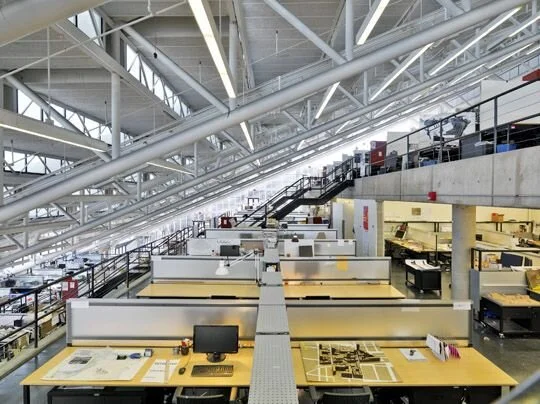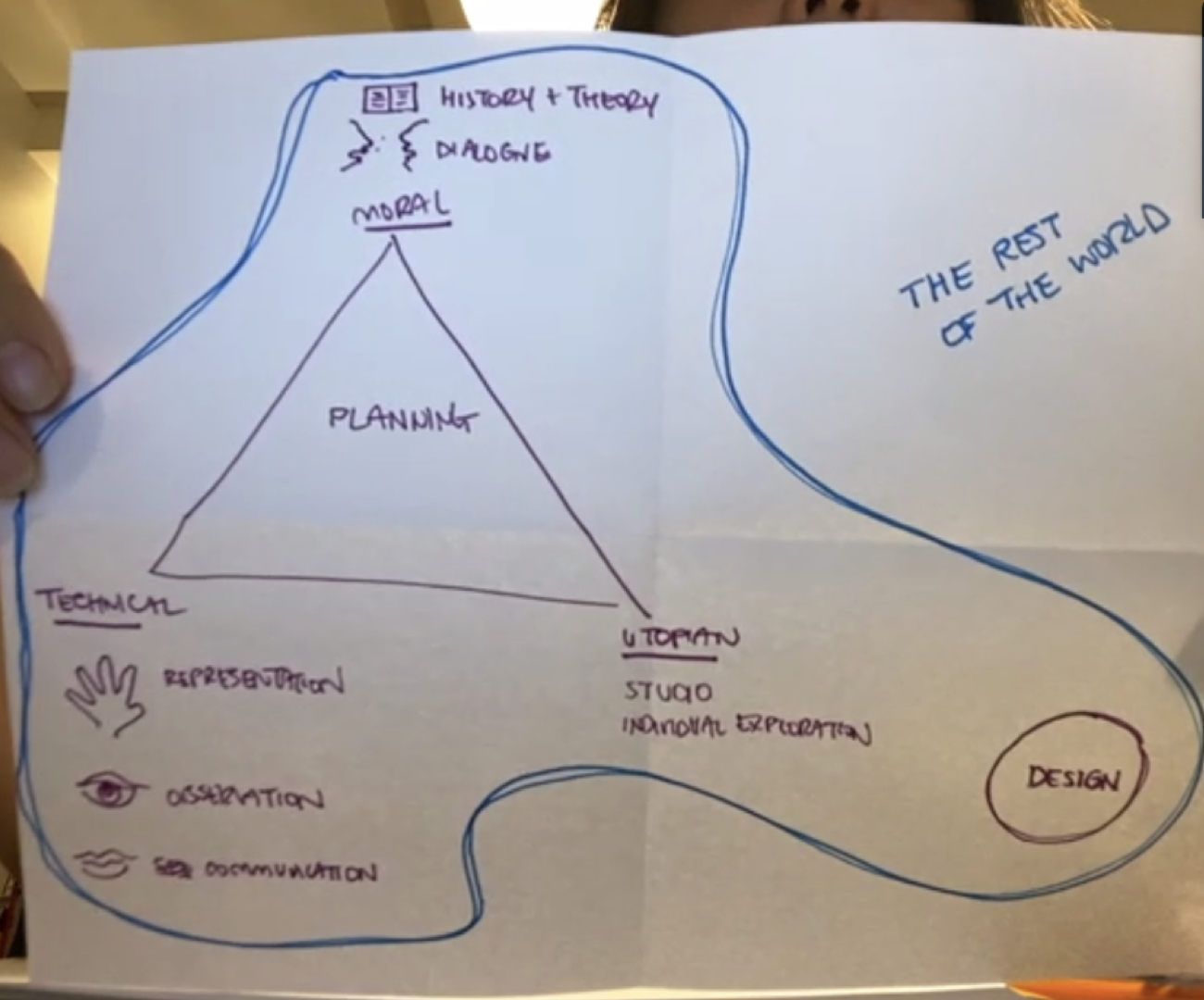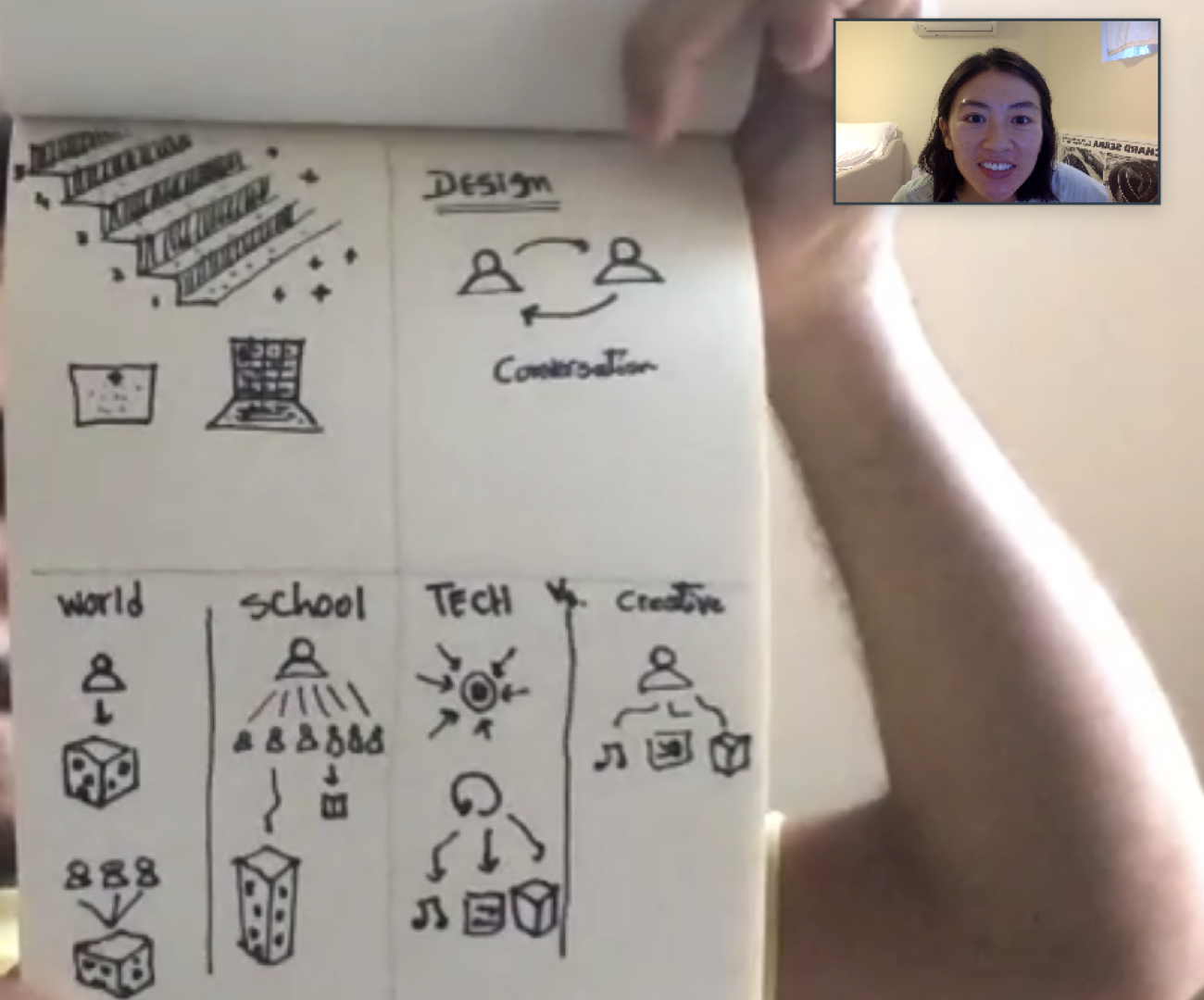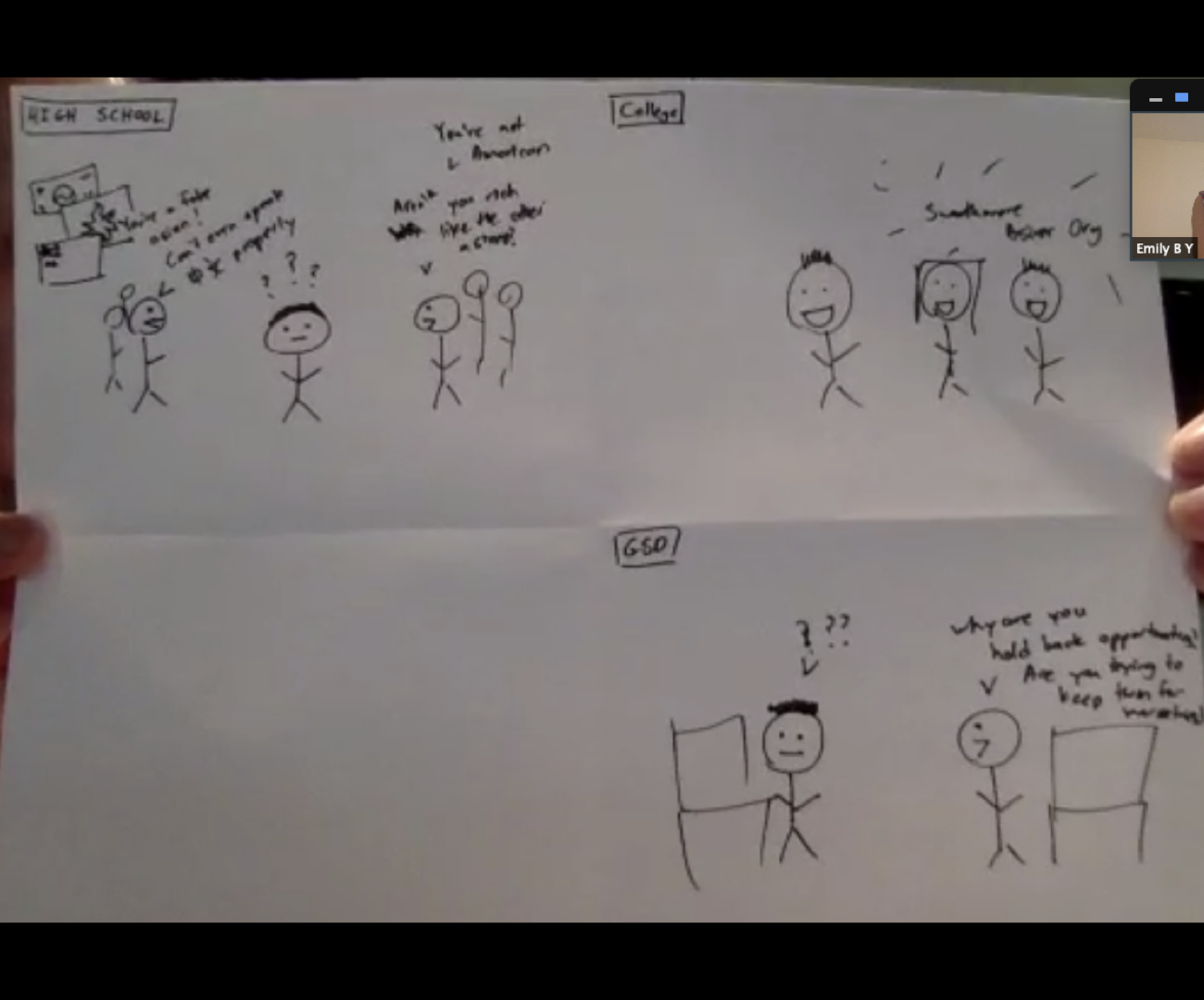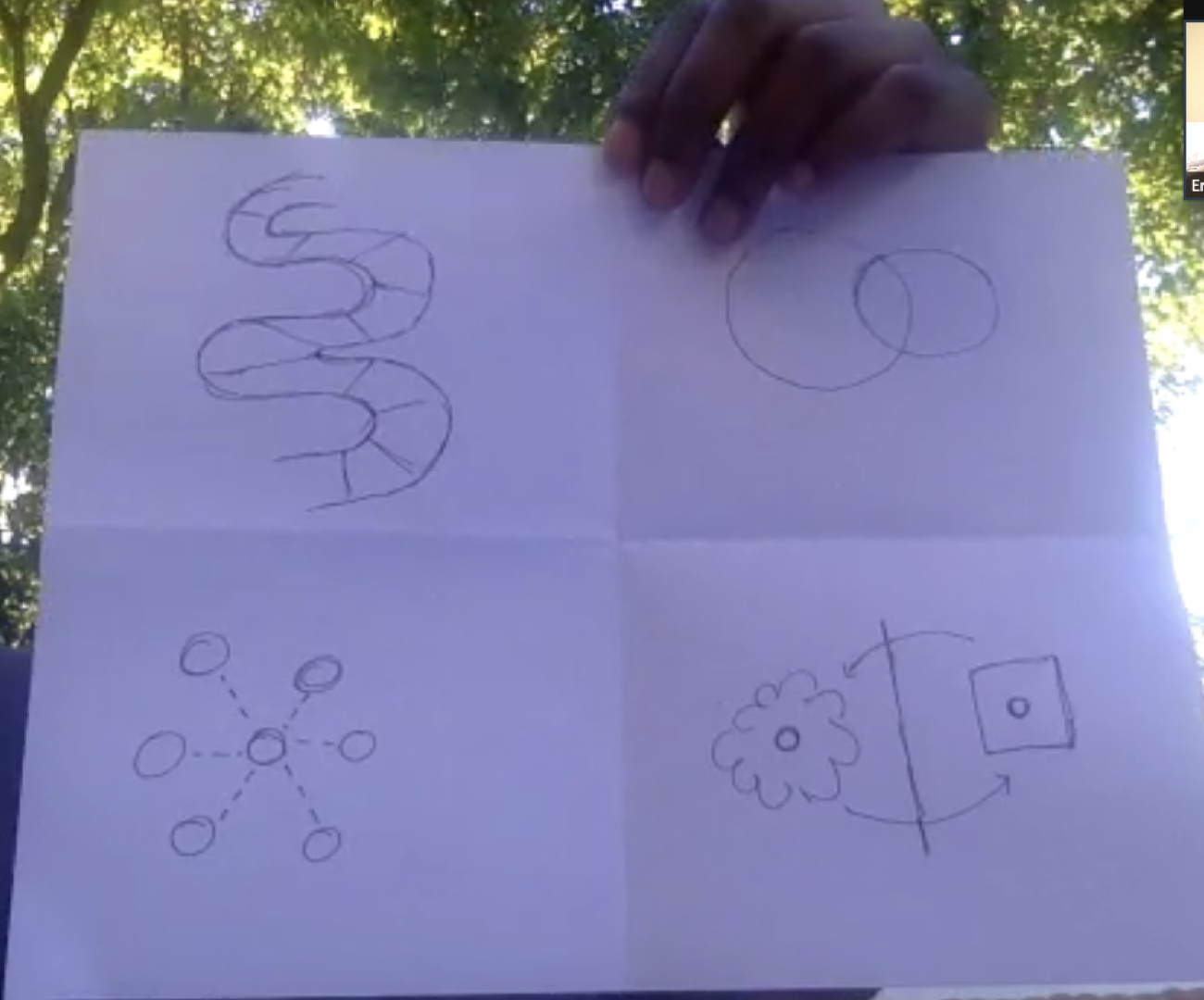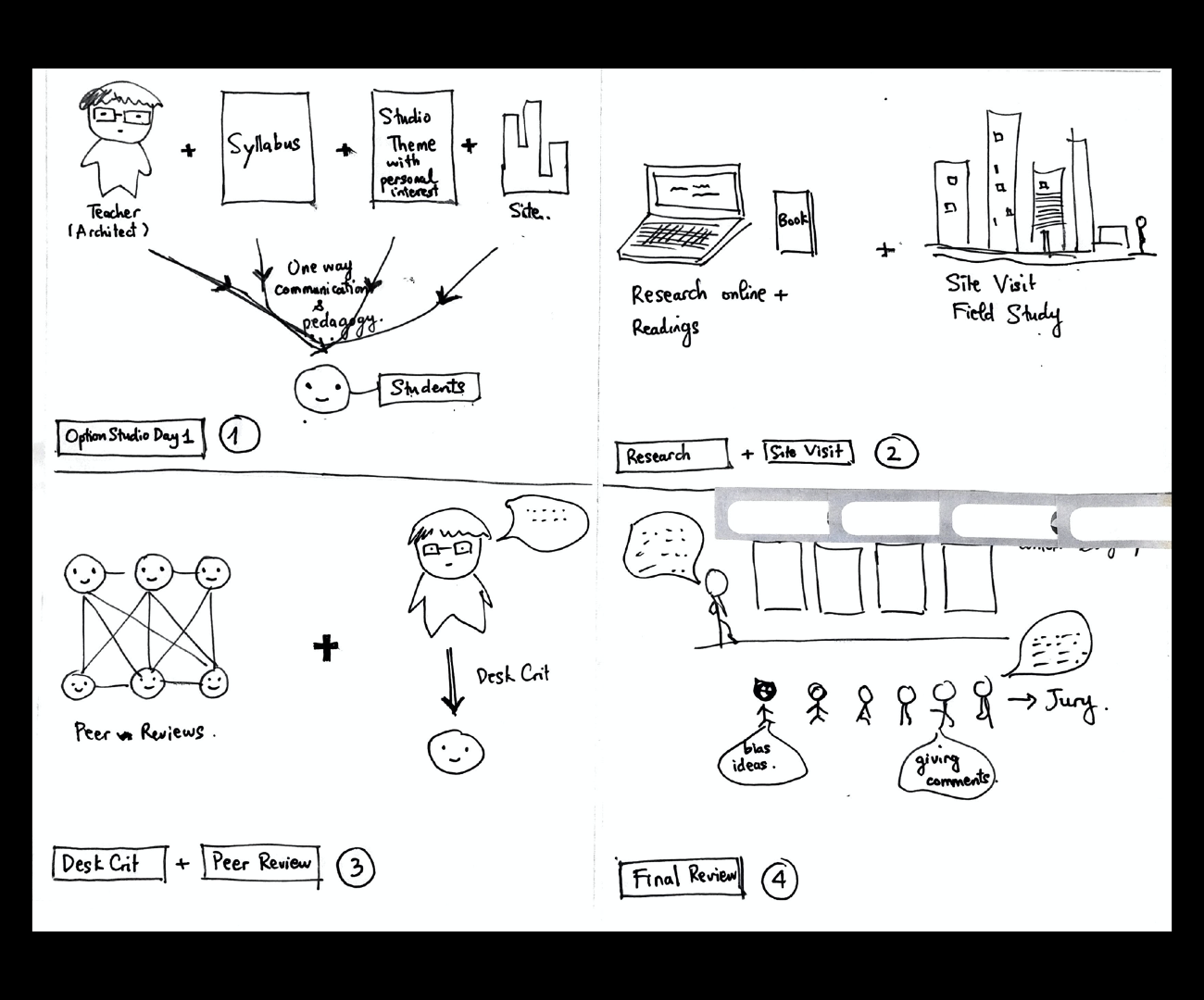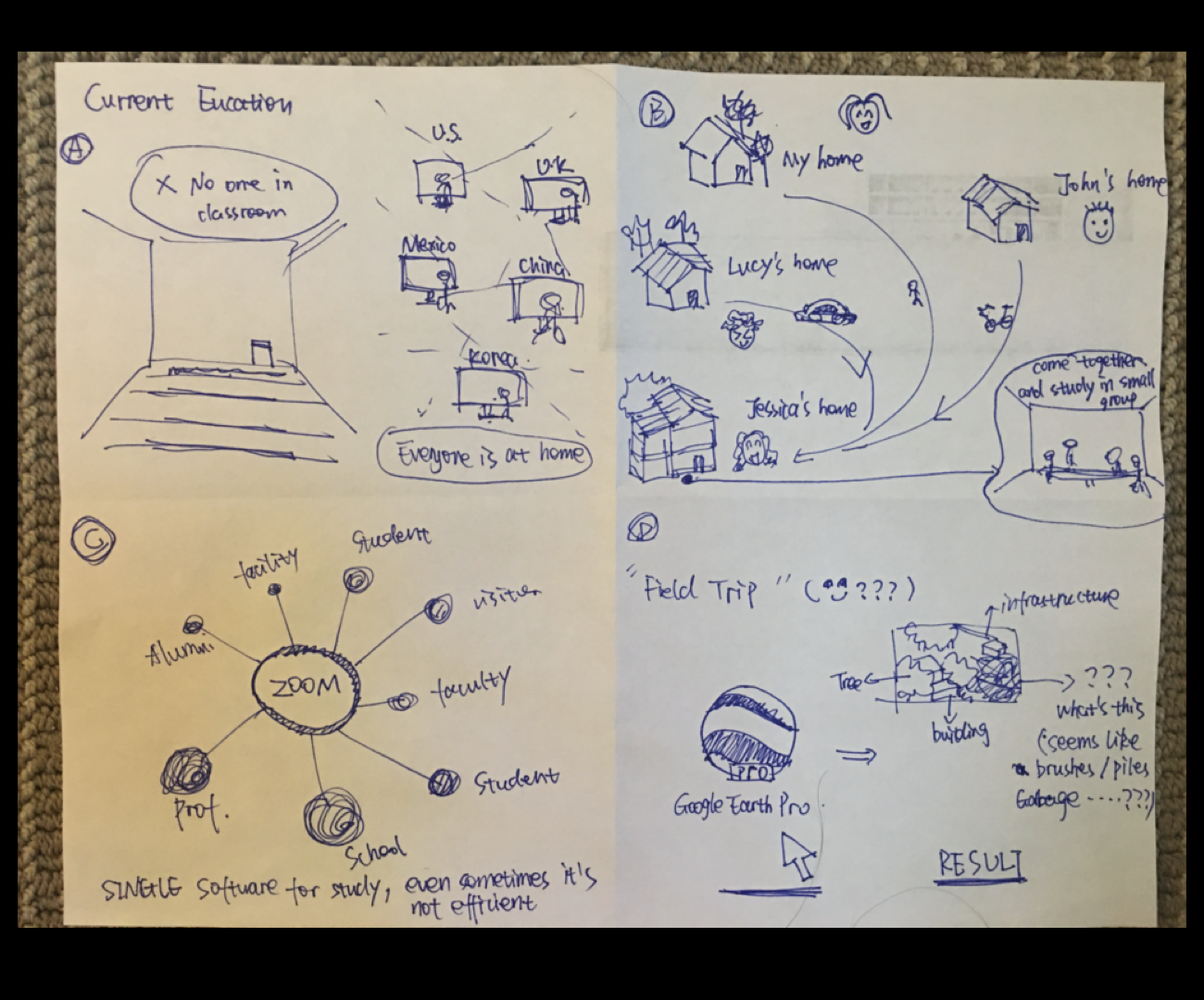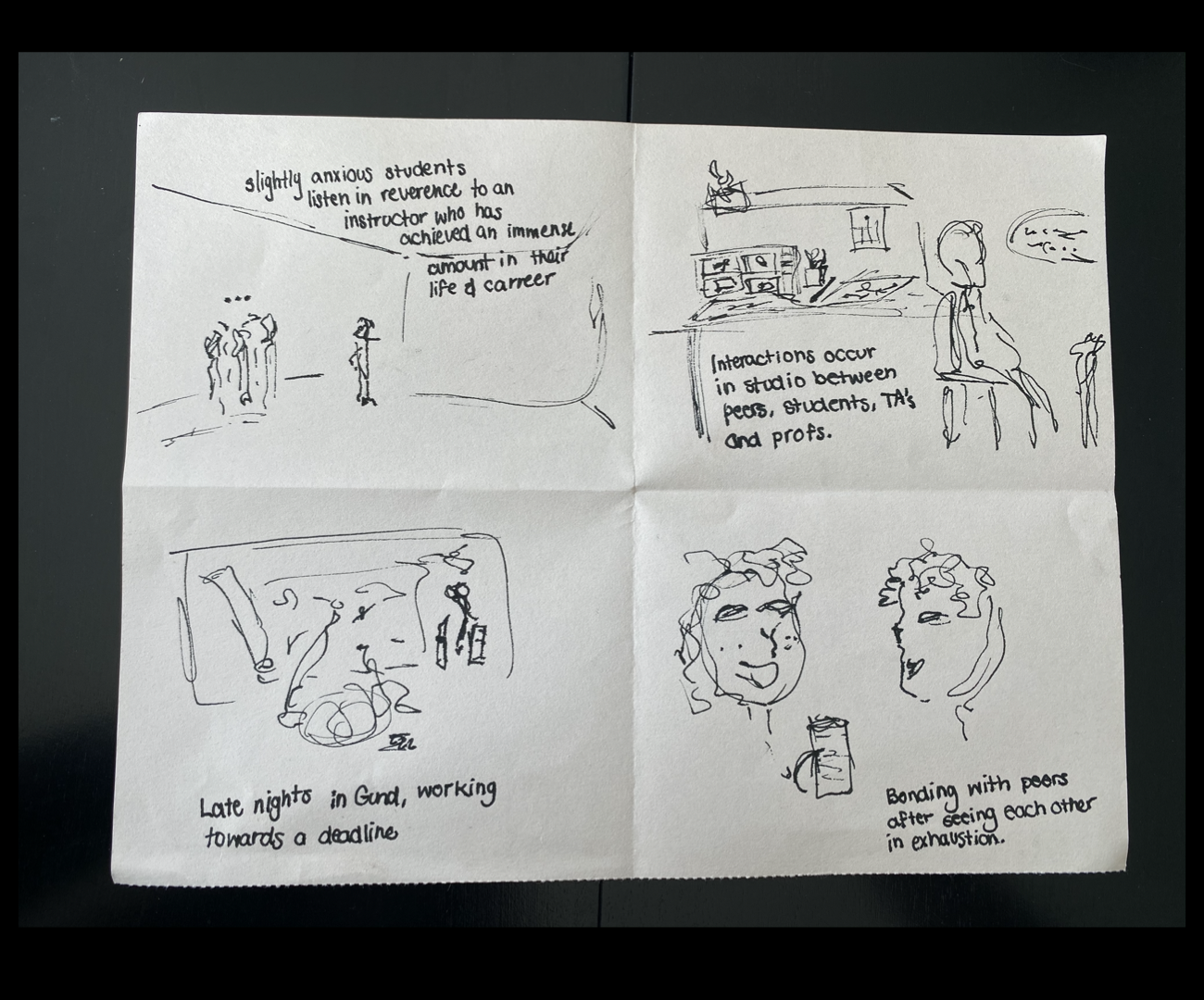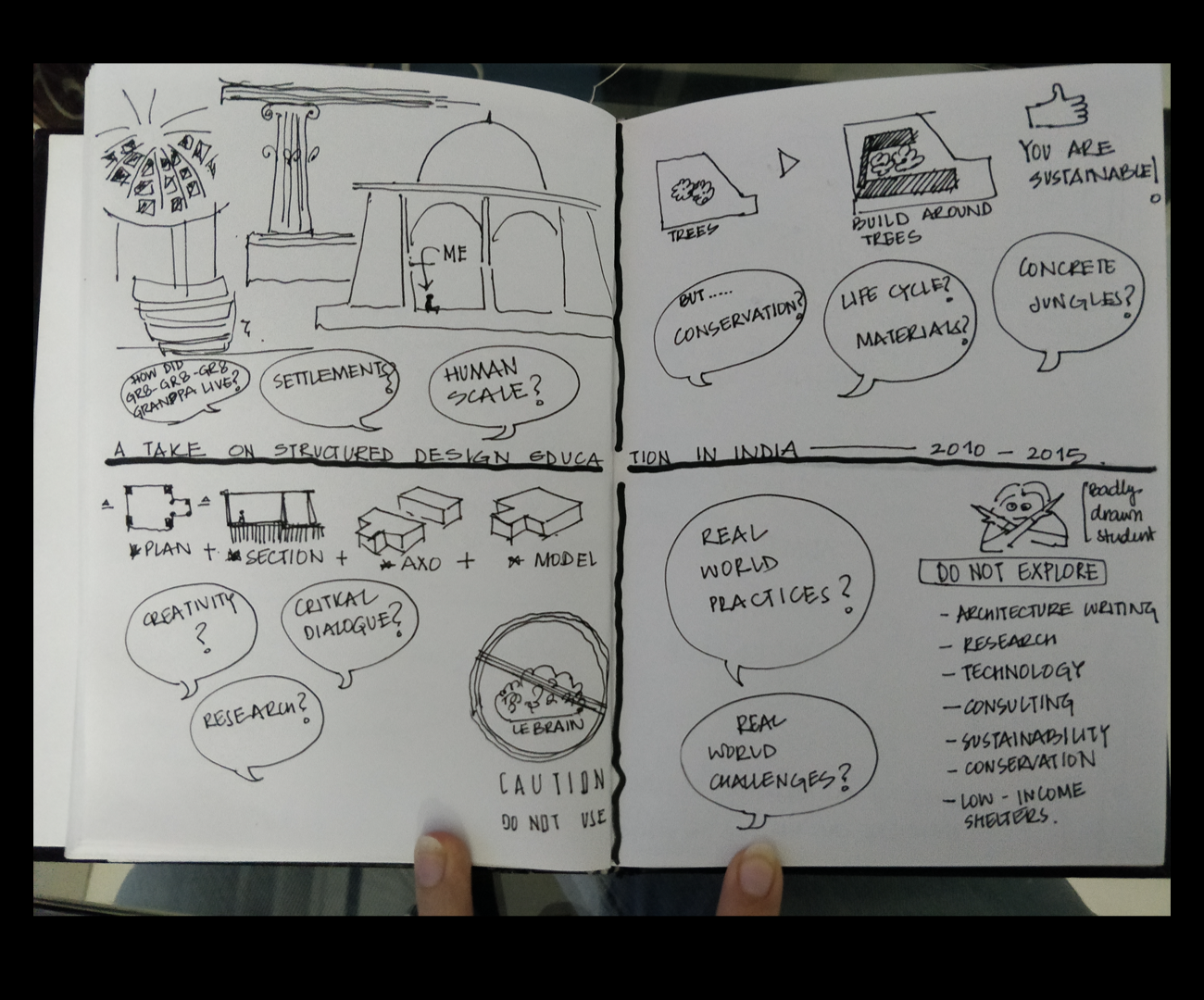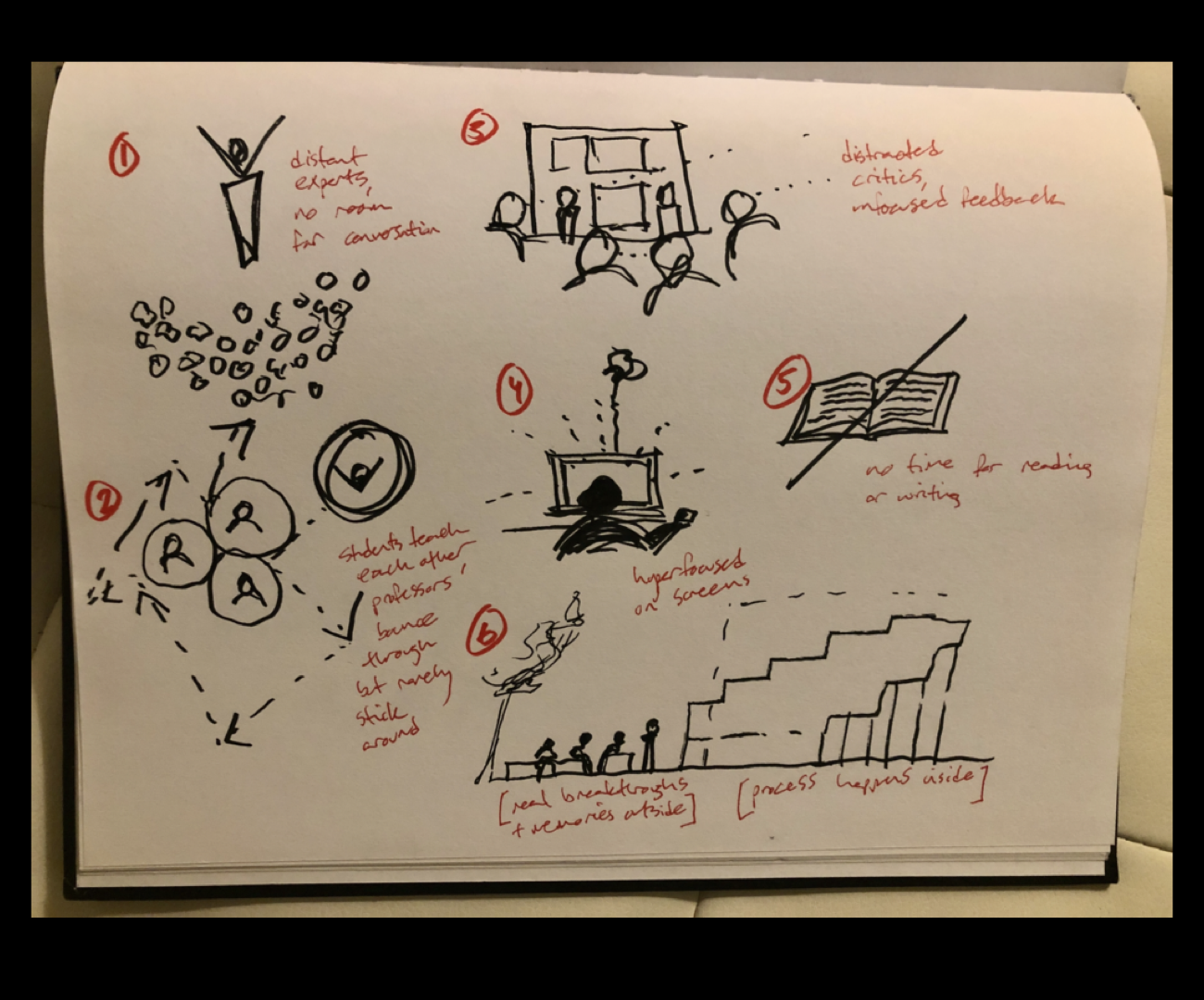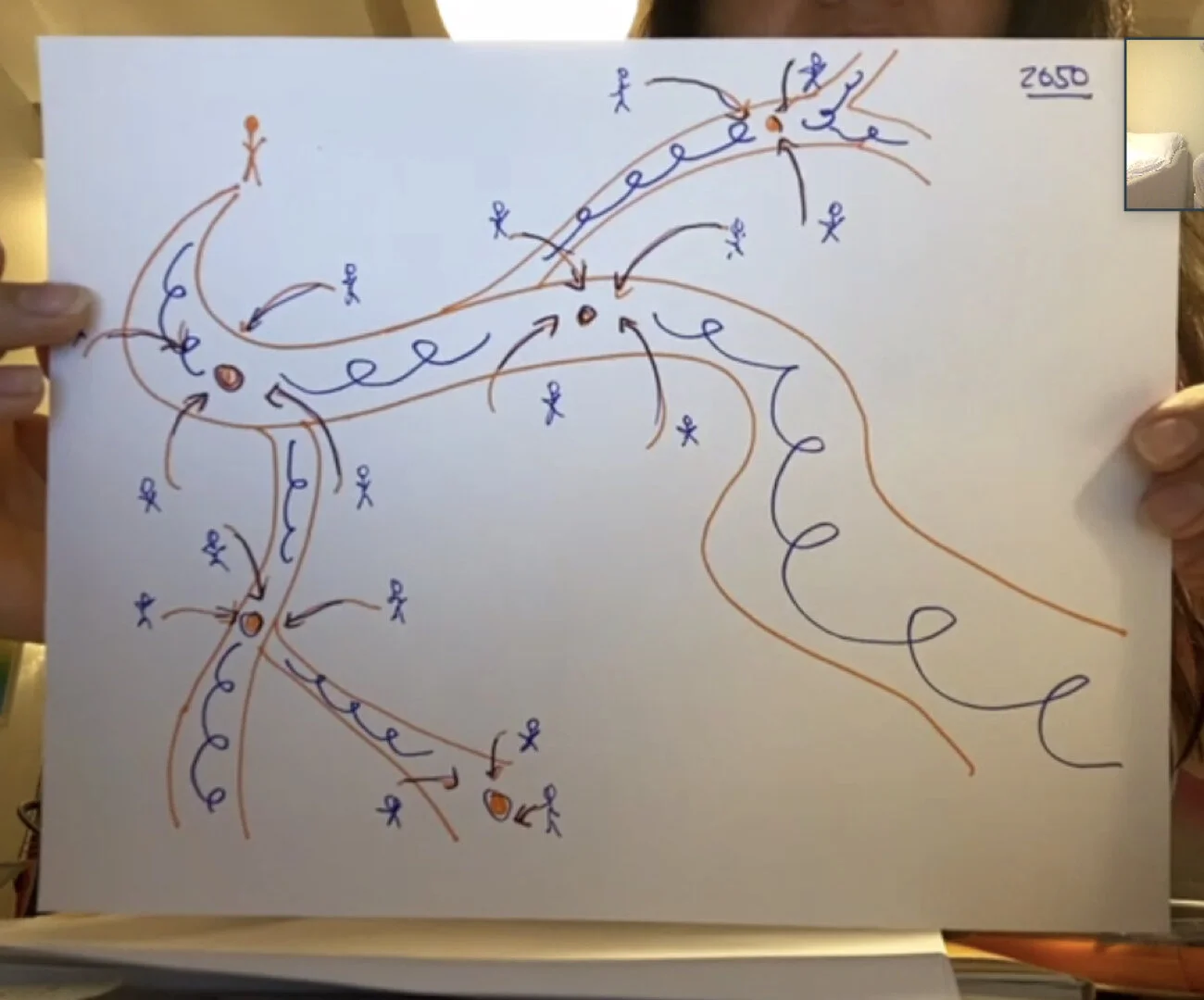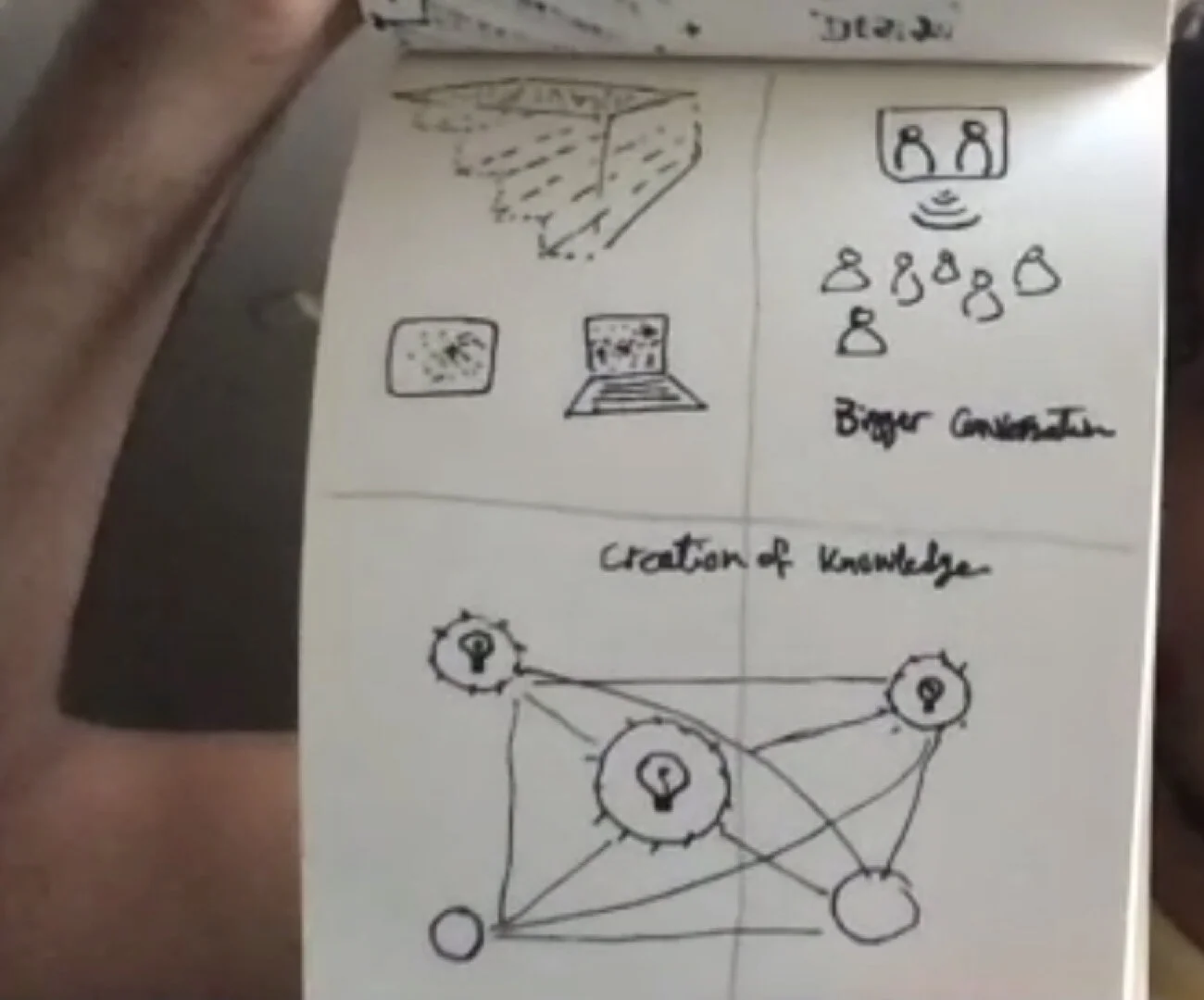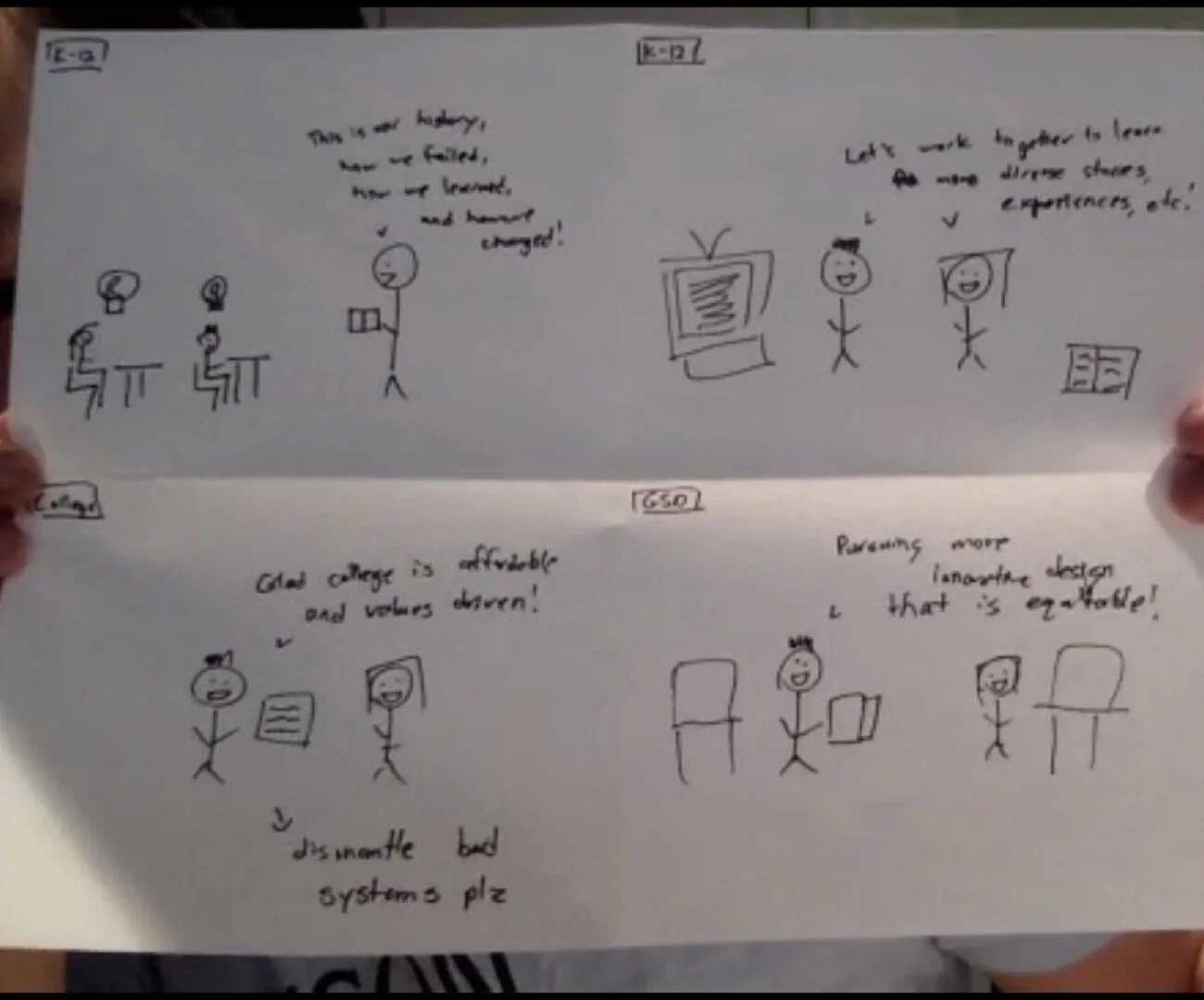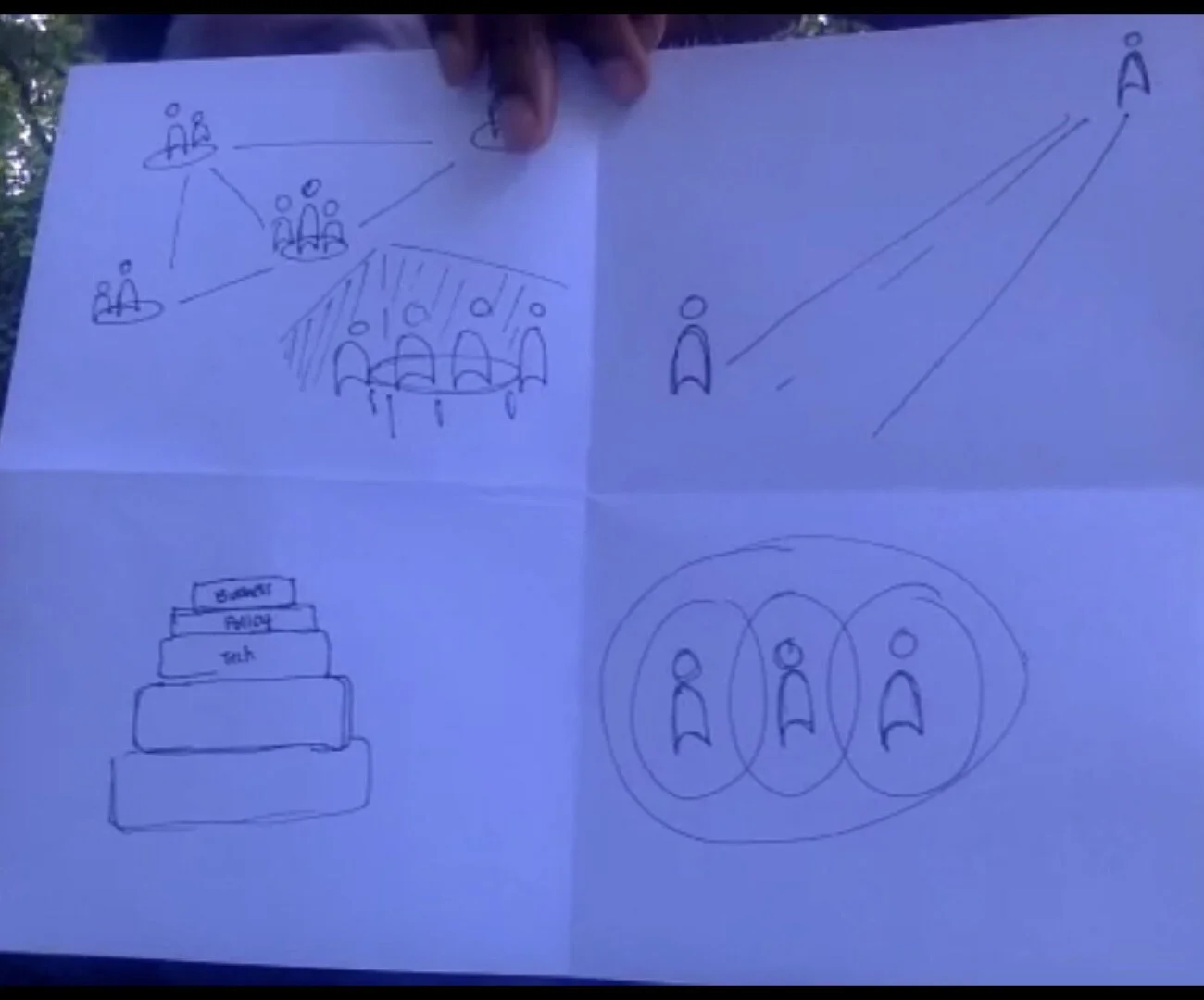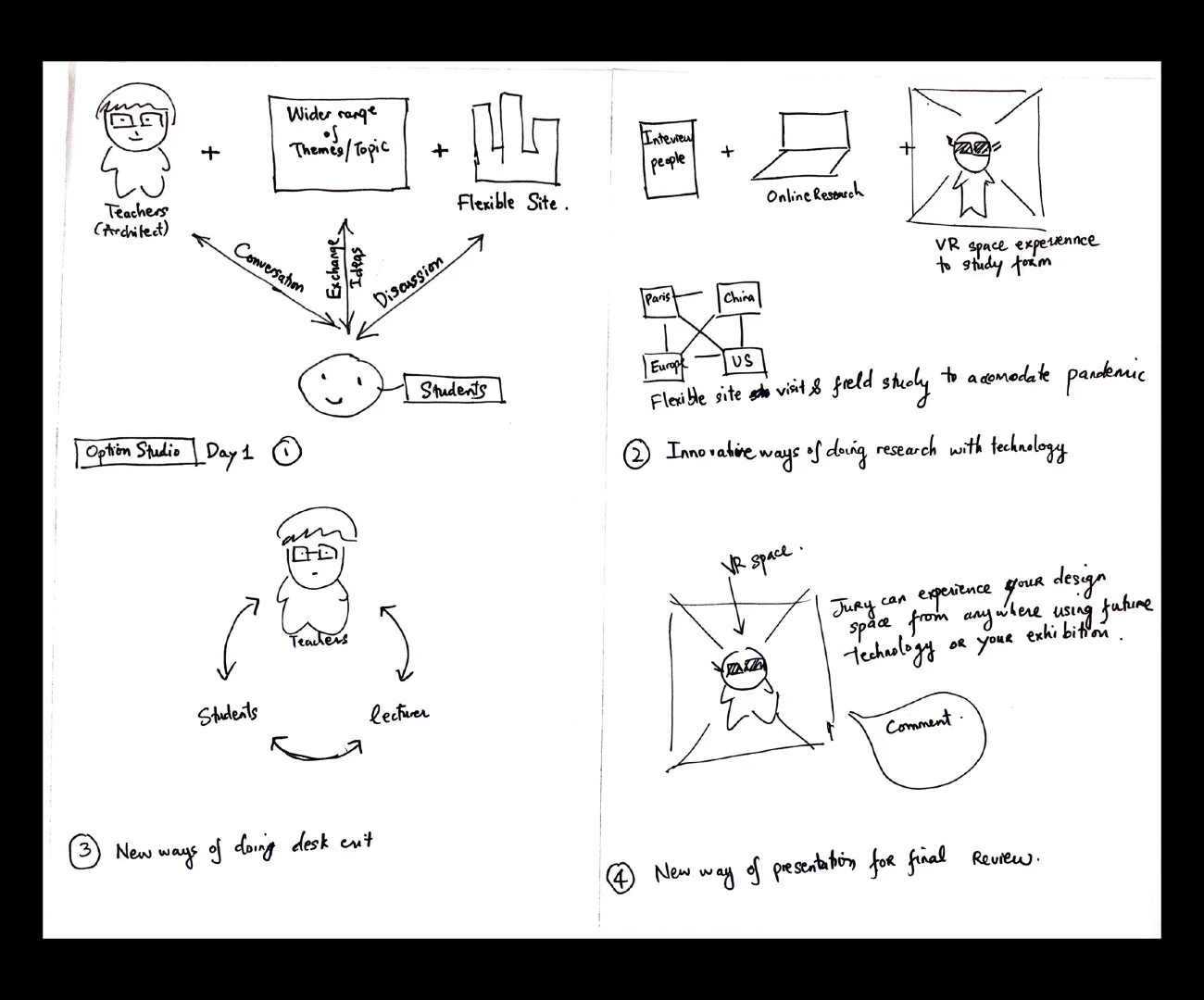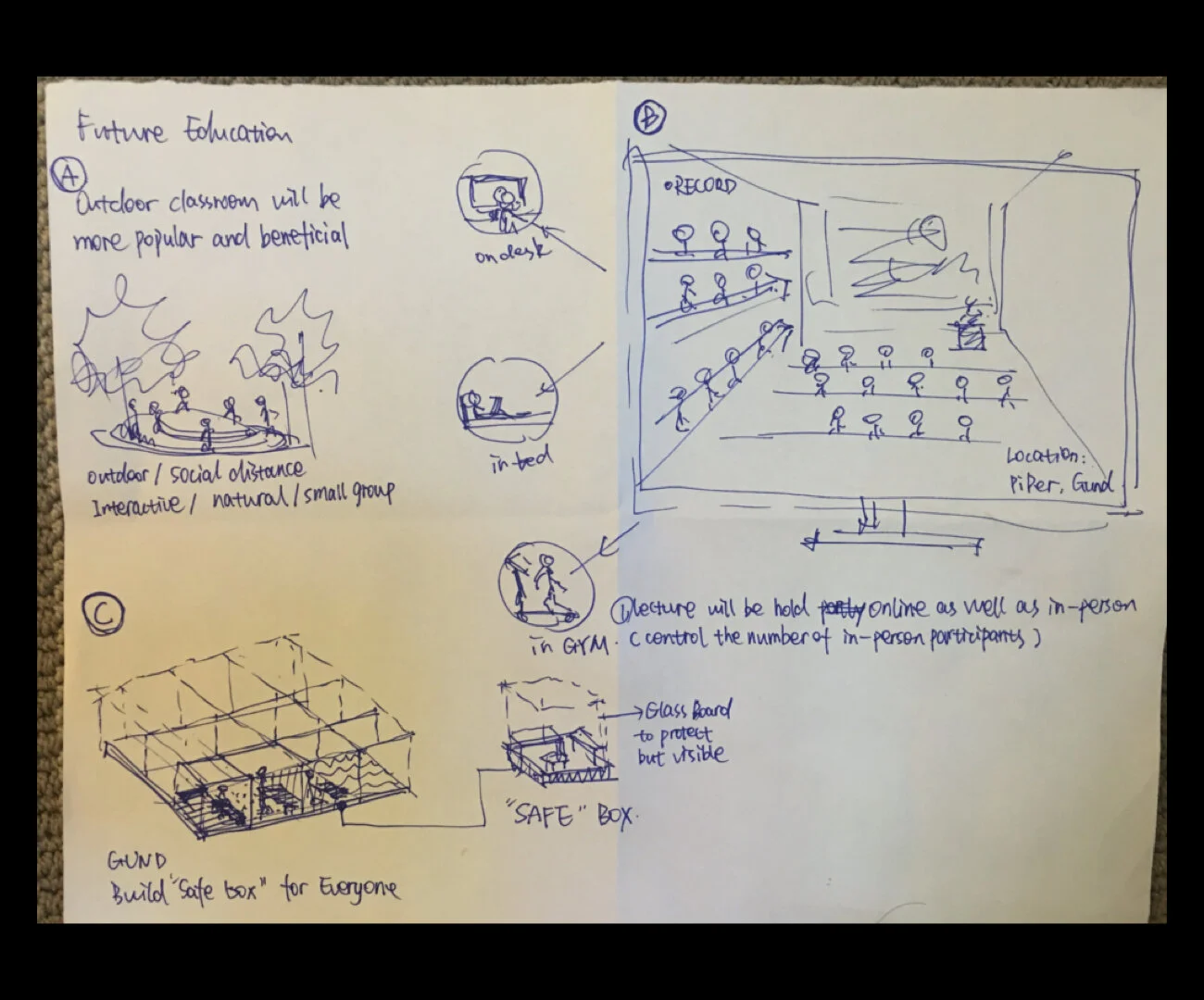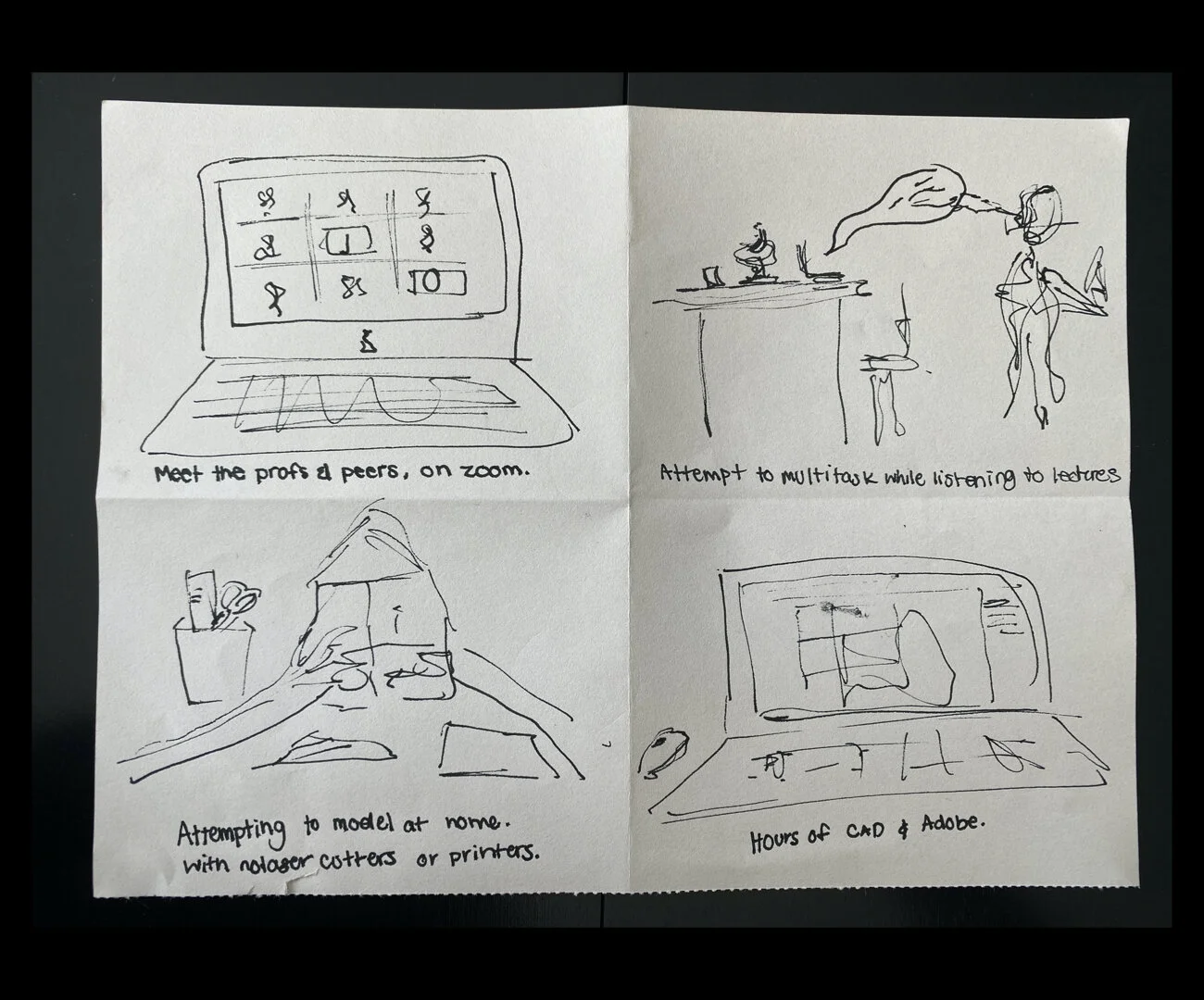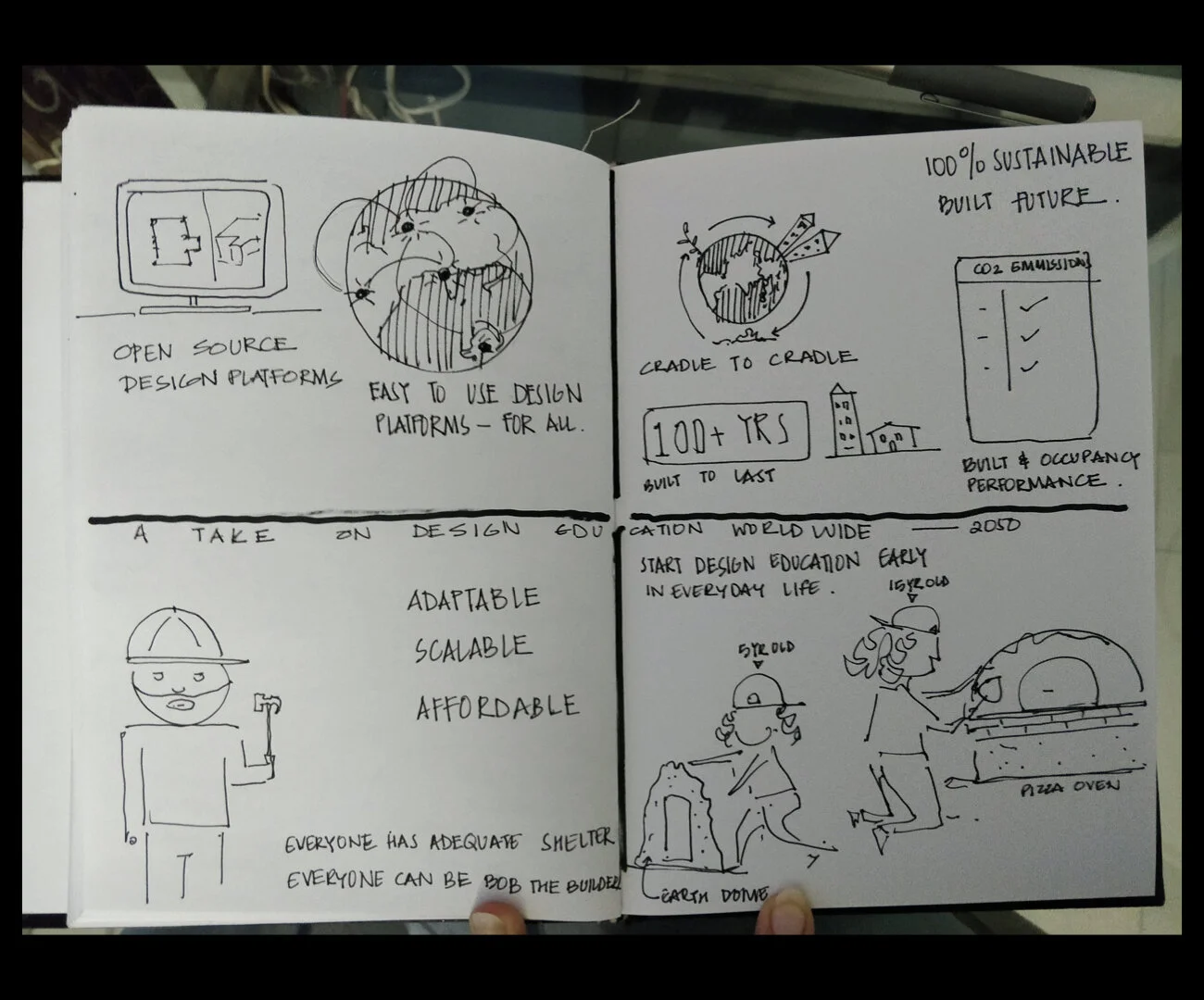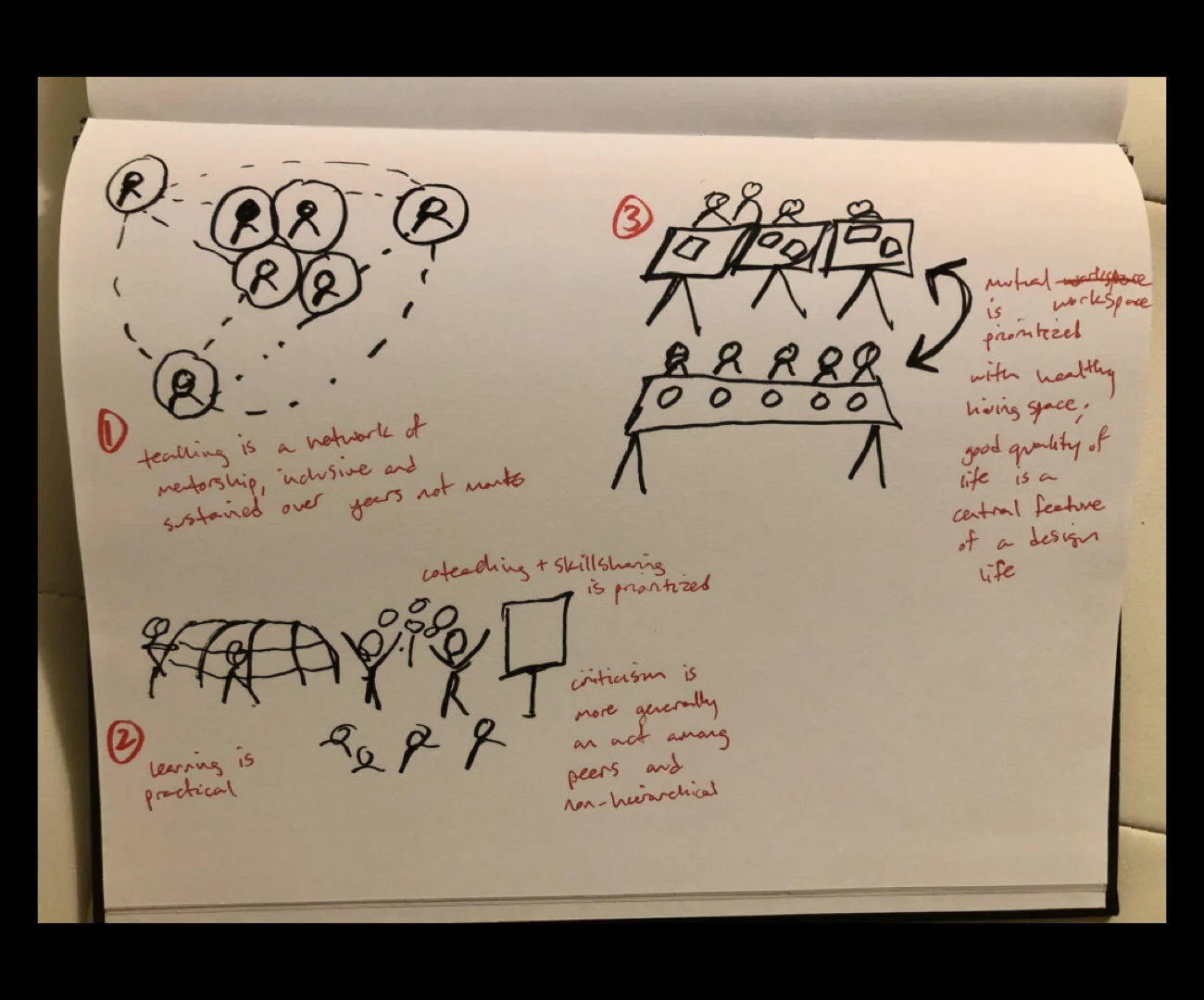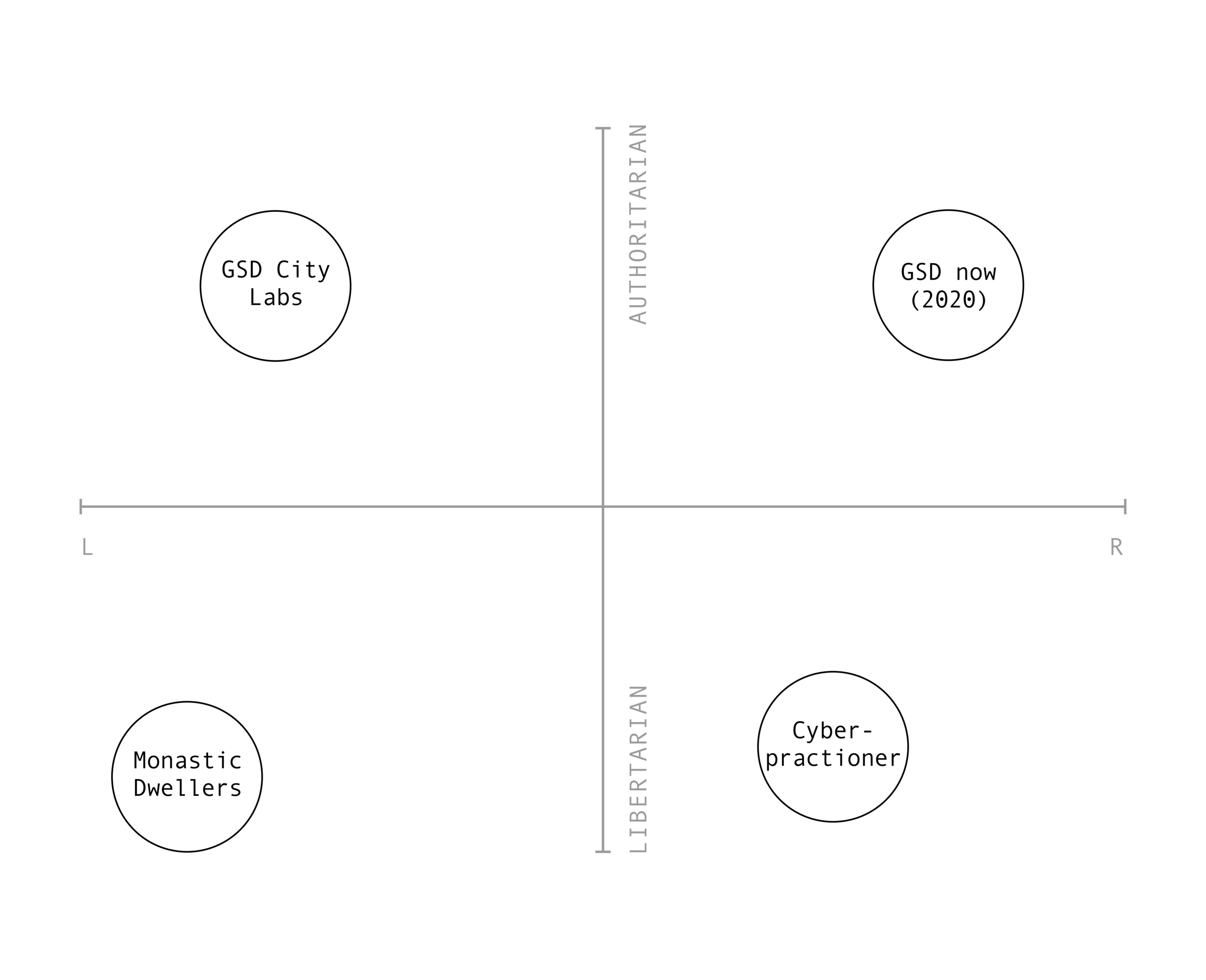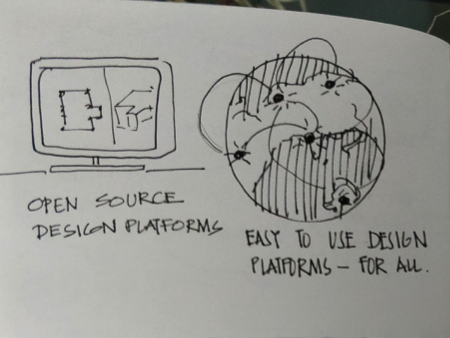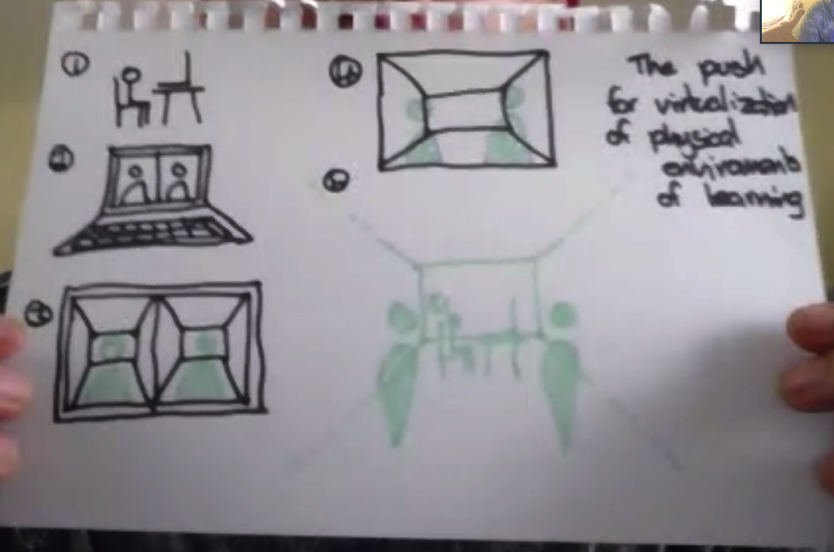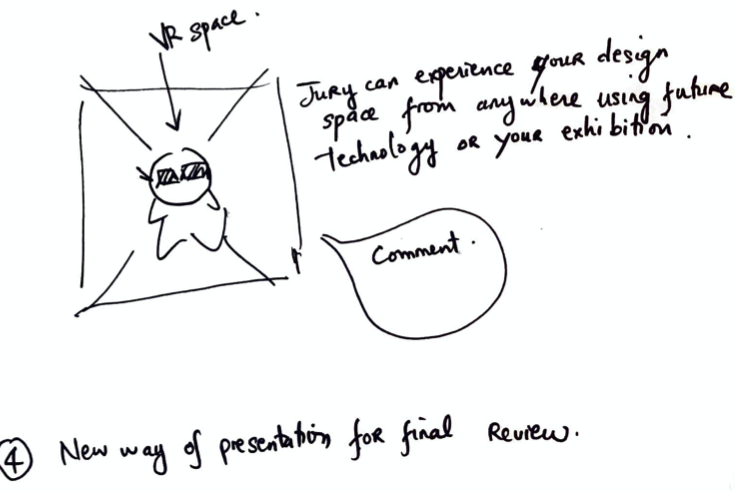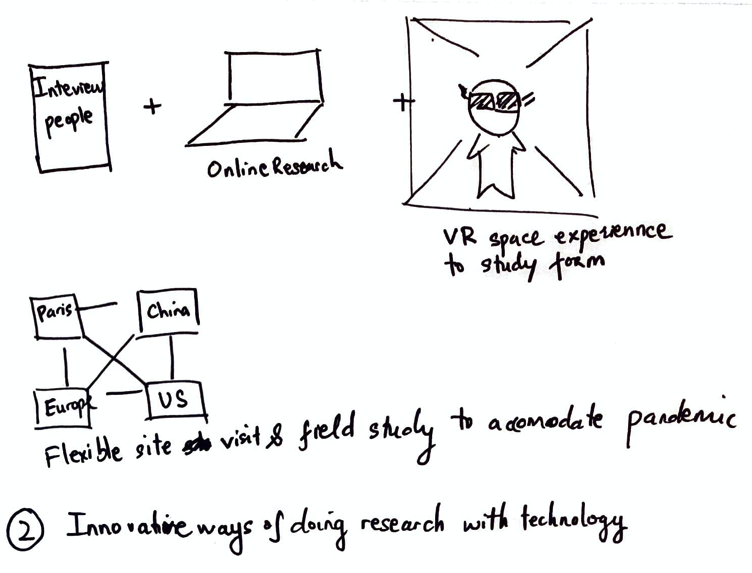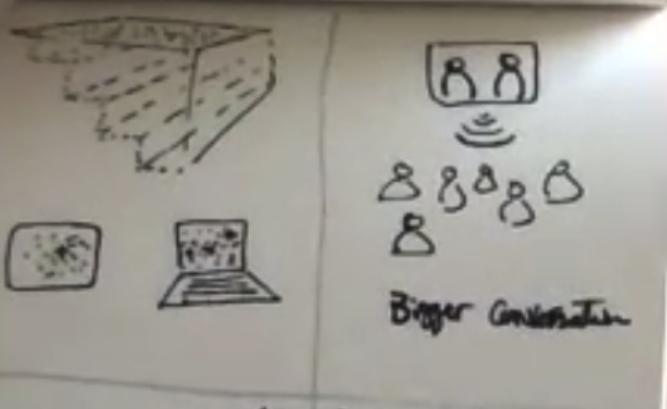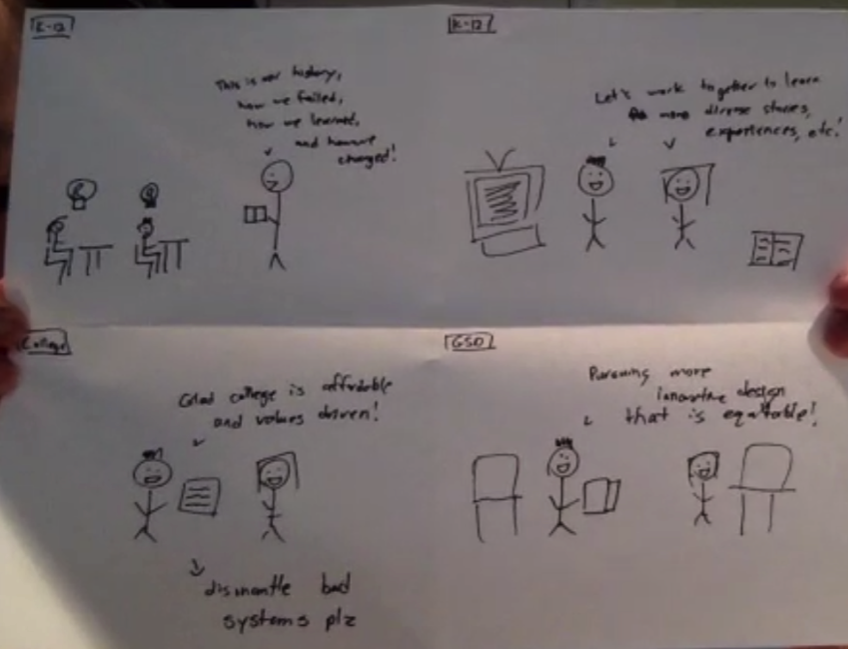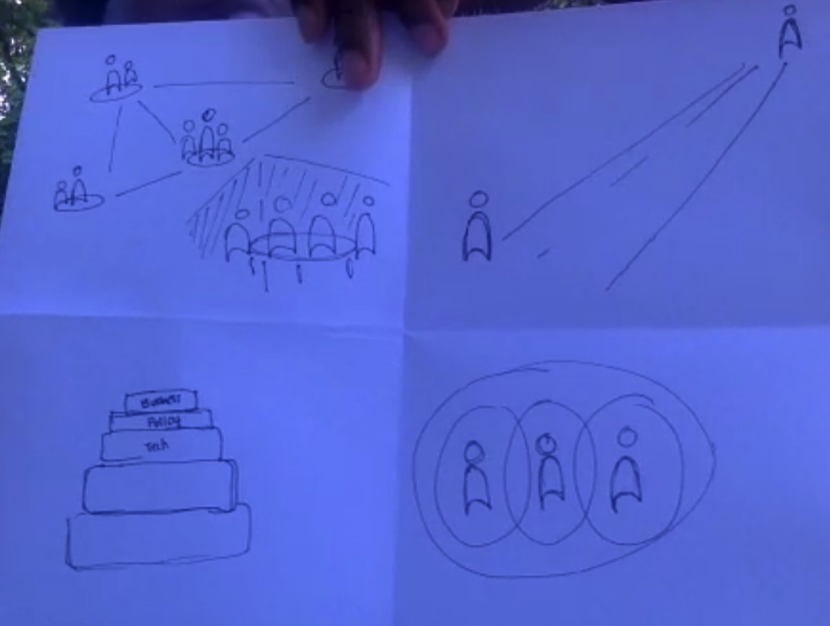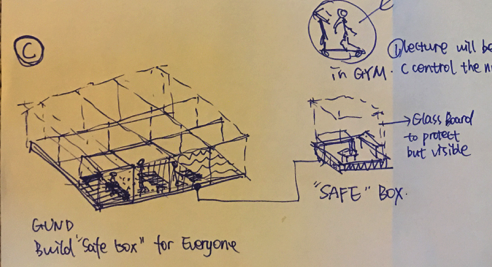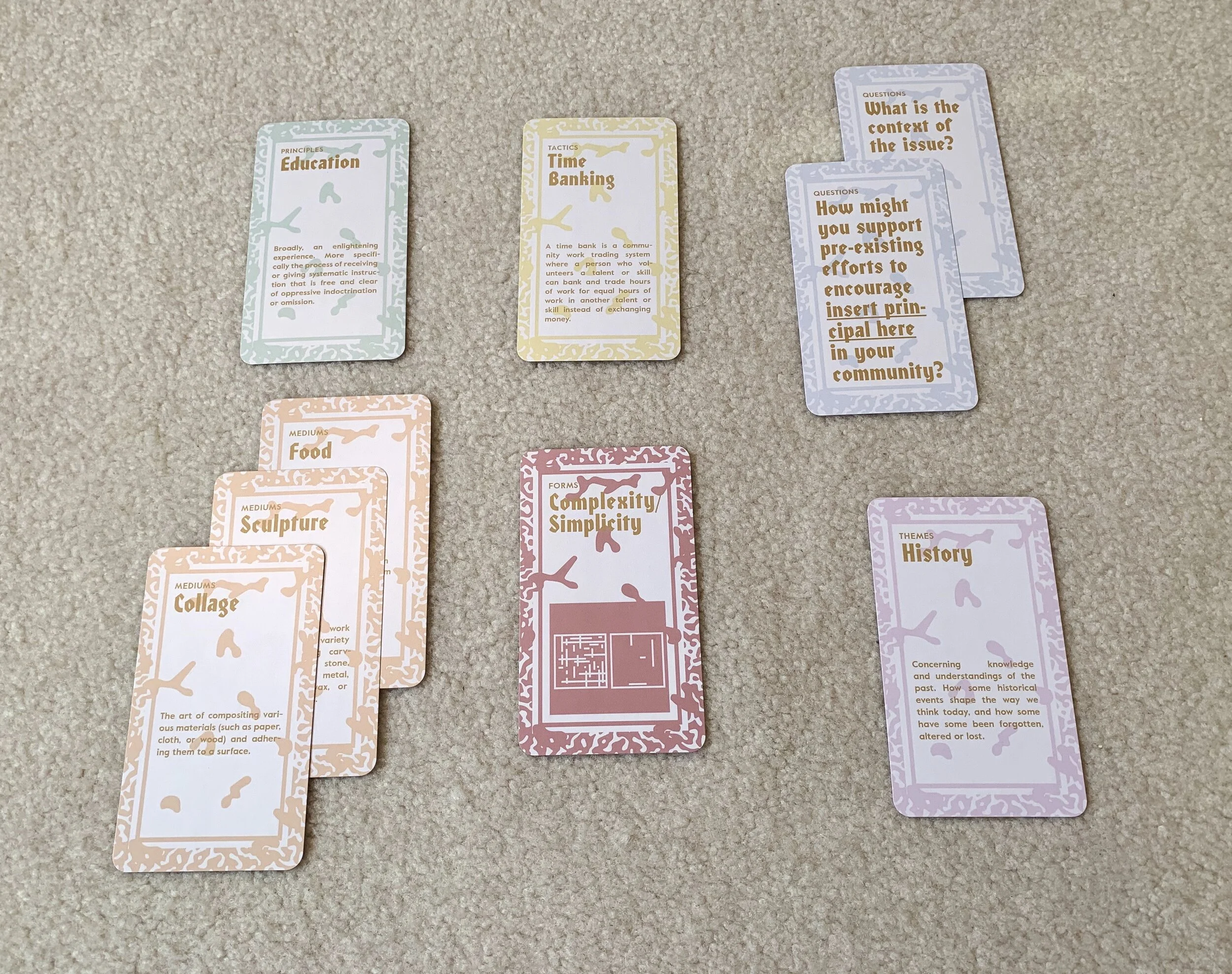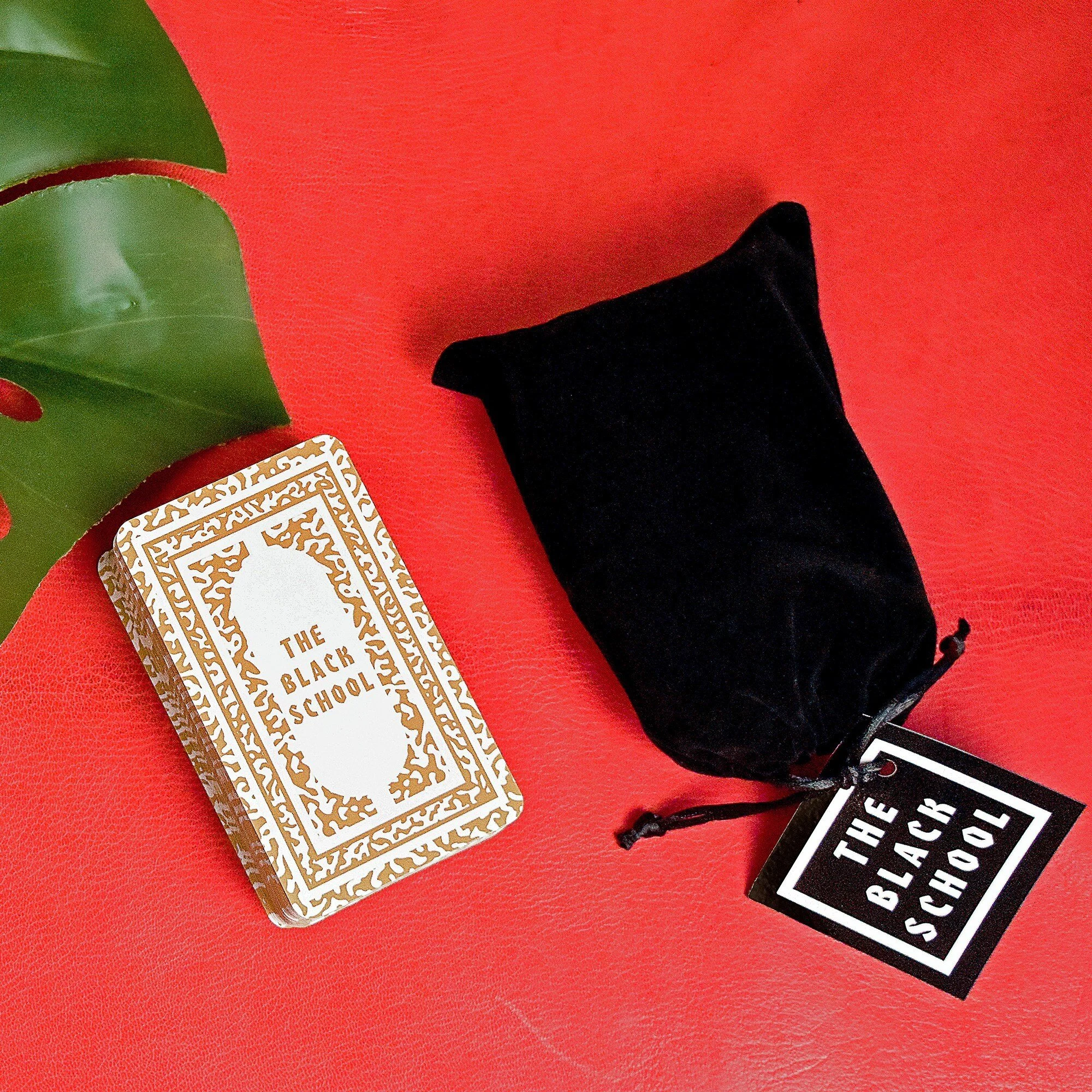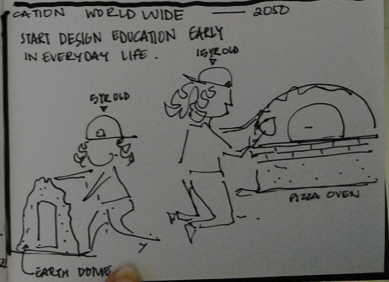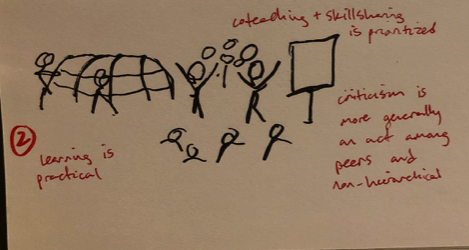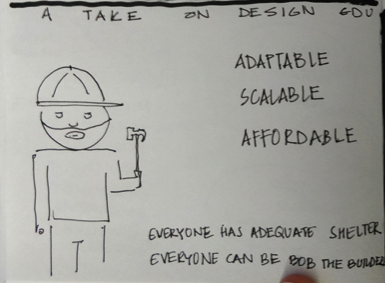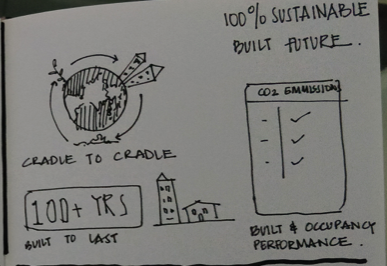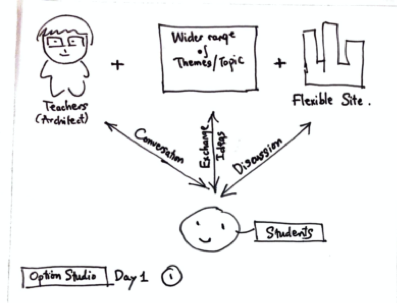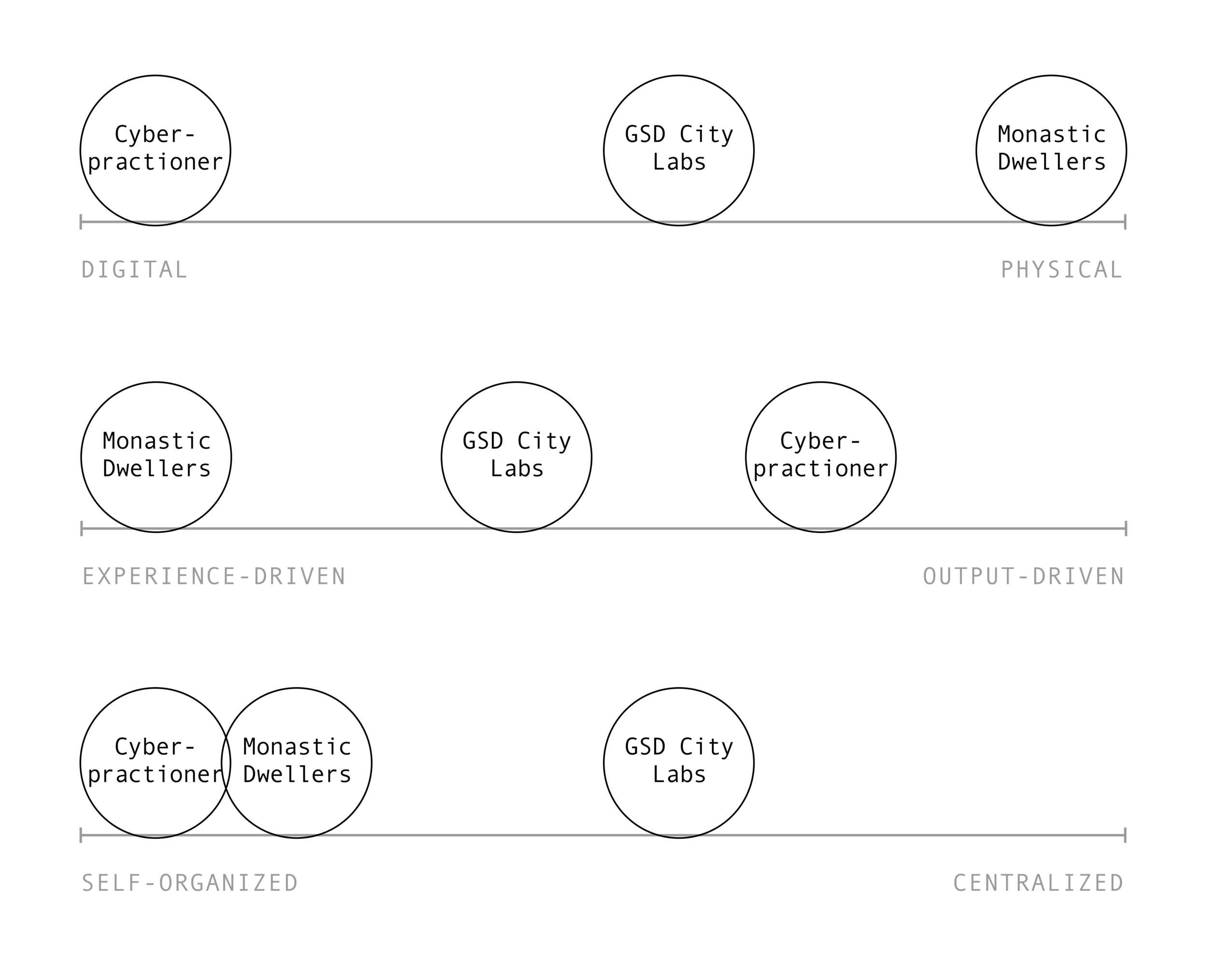The Future of Design Education:
Prototyping at the Graduate School of Design (GSD)
2020, Harvard Graduate School of Design
Project Type: Research, Workshop, Prototyping, Speculative Design, Design Fiction
Awarded and funded by the Harvard GSD Summer Research Grant
Overview
As a result of the events of COVID-19, students around the world are perceiving a gap between current and ideal states of distance learning experiences. Here at the GSD, students are also perceiving this gap; especially given the hands-on approach of a design education, but are not sure how to proceed with ideation and discussion about how to move forward. In light of Black Lives Matter, the GSD must also change its pedagogy to focus on racial equity and reflect on its past as an institution that has prioritized white and European voices. The way design pedagogy has long been, can no longer be unless the GSD is willing to become an outdated institution.
In an uncertain world, the future seems more malleable than ever. But who decides the future of design education. And how?
Research Questions:
What is the current design education experience for students at the GSD?
What is the ideal design education experience for students at the GSD?
Hypothesis:
My hypothesis is that by using speculative design- the practice of “exploring and criticising possible futures by creating speculative, and often provocative, scenarios narrated through designed artifacts”- we can find new equity-driven and innovative ways to imagine the design education of the future. By framing these imagined futures as a design fiction, we can create discussion about futures and bring them futures to life so people can engage with them and create meaningful moments of discourse.
*Source: Speculative Everything by Dunne and Raby
DESIGN PROCESS: QUALITATIVE METHODS & CO-DESIGN WORKSHOPS
To collect speculations on the future of design education from students, I hosted remote workshops. 10 different students made creative contributions to speculate on the future of design education. The prompt required students to have two pieces of paper and a marker.
I asked students to fold both papers into quarters and on each paper, to:
1. Please draw your current experience of design education.
2. Please draw your ideal future experience of design education in the year 2050.
Using the four quadrants of the folded piece of paper, I ask the students to tell me a story in four parts: what is your current experience of design education? And how do you imagine the future?
DESK RESEARCH
My work is also inspired by the below two texts from my summer readings:
Alternative Universities: Speculative Design for Innovation in Higher Education by David J Staley
Emergent Strategy: Shaping Change, Changing Worlds by Adrienne Maree Brown
In Alternative Universities, Staley writers out many possible alternative futures for universities struggling to innovate in response to our changing world. In this project, I loosely reference his Platform University, Microcollege, and Humanities Think Tank but adapt them with the insights I collected from the students and tailor the worlds specifically to design education.
creative contributions from gsd students:
Current experiences of design education
creative contributions from gsd students:
IDEAL design education experiences of 2050
*All participants and contributions are completely anonymous, hence the strange image crops you see above!
The workshop was intentionally designed in this way to ensure that anyone could participate, and also so that students could make creative and expressive contributions to an open-ended prompt. Students were compensated with $15 (except for one student who preferred to be compensated in Tatte pastries and coffee) as an acknowledgment that their creative contribution is a form of important creative labor.
Participant Demographics
For this research project, I prioritized student leaders who have been outspoken about rethinking design education and BIPOC voices or other voices that have self-identified as underrepresented in the formation of design pedagogy.
7 Current GSD Students, 2 Incoming Students, 1 Recent Graduates
2 Master in Urban Planning students, 2 Master in Architecture II students, 1 Master in Architecture I, 1 Master in Design Studies (Energy & Environments), 1 Master in Design Studies (Technology), 1 Master in Design Engineering, 1 Master in Landscape Architecture I
*Programs not represented: MAUD, MLA II, MAUD, DDes
PRESENTING THREE DESIGN FICTIONS
In imagining different futures, I used the above axis (also used in Dunne and Raby’s United Micro Kingdoms project) to map out alternative ideological systems. The x-axis’ “L” and “R” to not refer to left-wing or right-wing politics. In this instance, they are used to map out ideologies that determine whether these futures value personal or economic freedom.
DESIGN FICTION 1: CYBER-PRACTIONERS
This future is evoked in an imaginary tool where in the future, students can use poetry [the use of words and the spaces of unsaid words between them]; as a means of altering the structure and shape of language, to bring forms and shapes to life.
In this future, design education is completely open-source, focused on creative creation and collaboration accessible from anywhere in the world, online. Some students do not even use their real name during the duration of their time as a cyber-practioner; opting instead to use an avatar and online persona.
Education is completely free, with no formal professors or degrees awarded. Rather, students congregate online to meet others with similar interests, forging moments for peer-to-peer learning through online creation until they have gained the experiences they were searching for. They have no obligation or stay or leave, but students’ projects (for example, the one above) exist online forever for others to adopt and modify.
Note: This code was adapted from Hannah Knight’s Concrete Poetry workshop with the School for Poetic Computation. Concrete Poetry is “poetry in which the meaning or effect is conveyed partly or wholly by visual means, using patterns of words or letters and other typographical devices." It is also no coincidence that the video demonstrating the use of concrete poetry in the creation of forms references Tadao Ando’s concrete masterpieces!
Workshops Cited:
Key themes: ability to be fully immersed online, the importance of making as learning, better design software available for all, interactive digital experiences as a way of sharing
DESIGN FICTION 2: MONASTIC DWELLERS
In this future, Gund Hall has been transformed to a type of monastic dwelling for those who come to pursue the highest ideals of design. No output is expected or ever produced. This place is a testament to an almost spiritual pursuit of design, that many value but few are able to fully practice. Originally a center of western design ideals, the school has shifted to focus more on forms of design that have been traditionally silenced in design education.
The space becomes a place where visitors are welcome to enter, similar to a type of museum or religious space. The borders between students and the world are thin, especially because the students themselves are represent the diversity of the world outside and congregate in this way to create holistic and equity-driven design ideals.
The school is funded purely through donations and all students live entirely within the walls of Gund Hall. Occasionally, there are events hosted to invite outside practitioners of practical design to come and showcase their work and receive feedback or guidance from the monastic dwellers, but many outside disregard the feedback as too lofty and conceptual.
Over time, the school becomes like a relic to the past, but society prefers to leave it alone in isolation, rather than to dismantle it.
Workshops Cited:
Key themes: co-creation of knowledge, “bigger” conversations beyond the design community, equity-driven reflection and education, mutual workspaces and living spaces prioritized for better quality of life and learning
Project Outline Template
For my third and final design fiction, I used The Black School's Process Deck, which was featured in The Black School’s exhibition at the New Museum in 2018. As stated on their website, the “Process Deck is a tarot-style interactive methodology tool for brainstorming and designing creative activism projects. The cards are to be used in an art making capacity to help creatives, educators, and organizers explore how art can activate change on a local level. Through a series of questions and choices participants identify issues of primary significance to them, define the terms and context around that/those issues and design impactful projects to address them.”
The process deck is to be used in tandem with the project outline (left) to imagine how projects can affect change in communities.
For this design fiction, I used the process deck as a way to frame questions and introduce a bit of serendipity into the project. I framed the Principles, Tactics and Questions around the future of design education (the top row). The rest of the cards I drew at random.
The use of this deck is an acknowledgment to the work that has already been done in this space. At spaces like the Black School, people are imagining and pushing for more equitable design education futures. As a designer, I want to promote these voices and acknowledge those who have working on these problems for much longer than I have. Check them out!
DESIGN FICTION 3: GSD CITY LABS
In this future, Gund Hall sits empty.
The school has been dispersed to cities around the world, where students work in labs located at site they are working on. The labs become official parts of local governments and are incentivized to keep proposing new innovative ideas.
This elective form of public service requires no tuition but as a result is also unpaid. There is no student housing because students are expected to be ingrained in the location as observers of and potentially contributors to the local community. Students learn from professors who have spent their careers leading movements or projects in that location, presenting an opportunity for a type of hyper-local apprenticeship. The most impactful and popular topics include projects in social justice, taught by leaders in their respective locations and fields. Teachers and students engage in a form of mutual creation at the site, and create layers of short-term projects wherever they area.
The GSD City Labs become hubs for innovation, discourse and civic action. Its one downfall is the transient nature of it. Some students stay and continue to practice their place-specific work, but many leave. New innovative projects are constantly emerging as students come and go, creating a tension with sustainable businesses practices and leaving the local community feeling a sense of whiplash and impermanence in their city, a stark contrast to the slow-moving ways of their formal governing bodies.
As a result, the school evolves towards a practice of community time banking (a time bank is a community work trading system where a person who volunteers a talent or skill can bank and trade hours of work for equal hours of work in another talent or skill instead of exchanging money) model with community residents. This implies that in this world, all community work is valued equally (as a means to say, my community design work is as important as the work you do farming, cooking, creating art, teaching, etc.). Students can spend time engaging with place-specific food and art practices, instead of only working in their specific field. The projects that emerge are richer and grounded in the history of the community it engages in, and students feel so ingrained in their work that many stay long after their education is complete.
By utilizing time banking as a crucial practice in GSD City Labs, students are encouraged to engage with diverse community-specific activities and ingrain themselves in the communities they are designing for. As a way to further ground GSD City Labs’ practices in creating practitioners that are well-rounded in their understanding of their communities, GSD City Lab utilizes new tables that morph; placing individuals who are grounded and engaged in community efforts to take a central place at the table in the lab.
Workshops Cited
Key themes: place-specific design, “practical” design (learning by doing), teaching as a network of inclusive mentorship, sustainable futures, flexible sites for learning
TENSIONS
The three worlds embody the tensions we see now as we struggle to proceed with design education in light of COVID-19 and the our current racial reckoning.
This project does not seek to provide any answers about what the future of design education should be.
Rather, it creates a series of possible alternative futures as a provocation from the students themselves.

